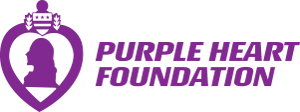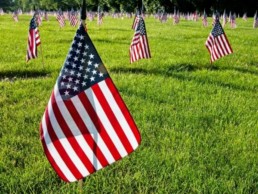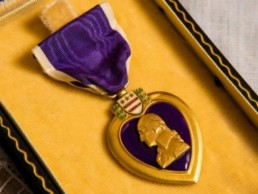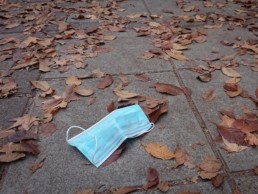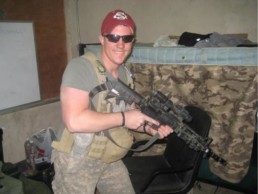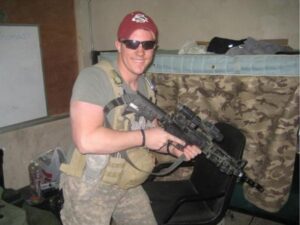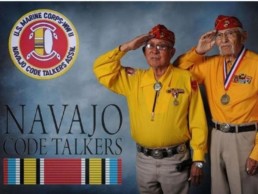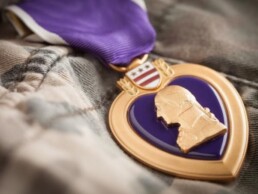The Honor of a Warrior – Staff Sgt. Edward Allen Carter, Jr.
Edward Allen Carter, Jr.
1916 – 1963
As Black History Month comes to an end, the Purple Heart Foundation honors the exemplary heroism, unmatched determination and commendable bravery of a young African American soldier. His actions were profound for a soldier of any race, religion, gender or creed but to happen during a time of segregation and discrimination, they are especially praiseworthy.
Lets begin at the beginning….Edward Allen Carter, Jr. was born on May 26, 1916, in Los Angeles California, but was raised in Shanghai, China. Carter knew he was destined to join the military from a young age. He attended military grade-school in Shanghai and studied languages until he became fluent in Hindi (his mother’s native tongue), Mandarin (the language of Shanghai), as well as English and German which he would later use in his military career. He began that career at the young age of 15, enlisting in the Chinese Nationalist Army. He rose to the rank of lieutenant before it was uncovered that he was underage and was discharged.
Once he turned 18, Carter attempted to join the U.S. Army but was not accepted due to discrimination. So Carter remained in Europe in the late 1930s, fighting for the Loyalists in the Spanish Civil War. He fought as a Corporal in the Lincoln Brigade until they were forced to flee to Paris in 1938. Upon his return to the United States in 1941, Carter once again attempted to join the U.S. Army and was finally accepted. He was quickly promoted to staff sergeant because of his extensive military experience.
During training in the segregated state of Georgia, Carter witnessed violence and discrimination upon African American soldiers. Many of whom were dishonorably discharged when they fought back. In order to remain in the military, Carter accepted multiple demotions in an era when African Americans were rarely allowed to be officers or even participate in combat. Racism proved to be a hindrance in Carter’s journey to follow his destiny. He volunteered to go into combat but was denied because at the time, African Americans were considered unsuitable for battle.
In 1945 however, replacements were desperately needed, so Carter once again gave up his staff sergeant stripes to volunteer as a Private and was assigned to the 56th Armored Infantry Battalion of the 12th Armored Division. Company commander, Captain Floyd Vanderhoff, recognized Carter for his experience and leadership by restoring his staff sergeant stripes and making him an infantry squad leader.
While fighting with the 12th Armored, Carter became a member of General Patton’s “Mystery Division”. He served as Patton’s personal bodyguard in the push into Germany where his actions in battle earned him a recommendation for the Medal of Honor, the highest award for valor, on March 23, 1945. Carter received the Combat Action Ribbon, the Purple Heart for the wounds he sustained in action, but due to his race he was awarded the Distinguished Service Cross, the country’s second highest military honor, instead of the Medal of Honor.
After the war, Carter was promoted to sergeant first class, but his enlistment was near expiration. During this time the Red Scare was in full effect, and therefore Carter’s request for re-enlistment had been denied due to fear that he may have communist ties from his exposure in China. He received an honorable discharge in October 1949 and lived out the remainder of his life as a family man until he passed away on January 30, 1963 at the age of 46.
Three decades later, a commission was assigned to identify unrecognized African-American heroes from World War II. Ten men were cited to receive the Medal of Honor. Edward Allen Carter Jr. was identified and recommended for honors for his actions fifty-two years after voluntarily leading a three-man group across an open battlefield. Edward Allen Carter, III received the Medal of Honor on behalf of his grandfather from President Bill Clinton on January 13, 1997. His citation read…
“For extraordinary heroism in action on 23 March 1945, near Speyer, Germany. When the tank on which he was riding received heavy bazooka and small arms fire, Sergeant Carter voluntarily attempted to lead a three-man group across an open field. Within a short time, two of his men were killed and the third seriously wounded. Continuing alone, he was wounded five times and finally forced to take cover. As eight enemy riflemen attempted to capture him, Sergeant Carter killed six of them and captured the remaining two. He then crossed the field using as a shield his two prisoners from which he obtained valuable information concerning the disposition of enemy troops, in their native tongue. Staff Sergeant Carter’s extraordinary heroism was an inspiration to the officers and men of the Seventh Army Infantry Company Number 1 (Provisional) and exemplify the highest traditions of the Armed Forces.”
Against all odds, Edward Allen Catrer, Jr. fought for what was right and followed his destiny. The Purple Heart Foundation Salutes Staff Sgt. Edward Allen Carter, Jr. for service and sacrifice. This Black History Month join us in honoring all service men and women who bravely follow their destiny in the eyes of discrimination and adversity.
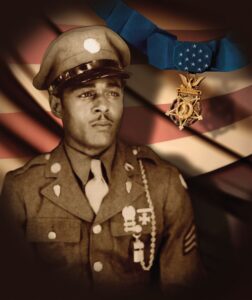
Sgt. Dorsey: The wallet that saved my life!
On Aug. 14, 1937, Mrs. Elizabeth Dorsey gave her youngest son, Raymond, a leather wallet as a present on his 16th birthday; she never knew that wallet would save her son’s life in WWII.
Raymond Dorsey joined the 22nd Infantry of the 4th ID a few weeks before Christmas. “We were in the Hürtgen Forest of Germany during the Battle of the Bulge. There was lots of snow, and it was so cold the soldiers had to take socks and other clothing off the dead to keep warm” – these memories still haunt Mr. Dorsey to this day.
“If it wasn’t the Germans trying to kill us it was the weather. I fought through the Bulge until mid-January of ’45 when it was over. This is when the prisoners started turning themselves in – they were glad to be out of it. There were more of them than there were of us, but the fighting was over, and they were surrendering. Middle of Jan ’45 – my outfit started to receive a lot of German prisoners. I had to line them up and search them. They all had a wallet full of German money, which was worthless to them now – there was nothing for them to buy, nowhere they could spend it – but I didn’t have any money. I traded them anything I could give them for their money. I ended up with so much of their money – my wallet was so full I couldn’t carry it in my back pocket, like normal, so I moved it to my shirt front pocket. We took artillery fire during the fighting at the Bulge and up until this time I had several close calls – yet was never hit.
We were later moved to the city of Prüm, Germany, on Feb 14, 1945 – we were told to set up a staging area at the edge of town. The enemy was waiting to hit us until the late evening; dropping shells all around us. We had to set up a command post in a house with two medics setup in the basement. I was on guard duty when the Germans dropped a shell real close. I was a little way away from the house and hadn’t been hit, so after those shells dropped, I moved closer to the house to find some cover. I took one step into the house and when I turned around a shell landed right in front of me… and that’s when my lights went out. The fat leather wallet in my shirt pocket, now over my heart, caught the main hit of shrapnel. I was unconscious and the medics helped save me by stopping the bleeding.
When I came to, I was on the floor of a big building, maybe an airplane hangar. From what I could see, the whole floor was covered with soldiers like myself – just full of soldiers like me. I wanted a drink of water – they wouldn’t give it to me, but they did give me a shot of morphine. I hadn’t had a shave or bath since I’d arrived. I must have been a sight! I don’t know how long I was there or where it was – they kept me knocked out. They loaded me into an ambulance, and I remember I heard them say we were passing the Eiffel Tower, so we must have been in Paris at this time. When I woke up next – I woke up bathed, shaved and in a clean bed with sheets. I don’t know how long I was in France. All I remember next is waking up in a hospital in England and being handed my belongings, the wallet included; only this time it was full of American money – someone had changed all the German money for American! I felt blessed because there was enough money in my wallet to send $100 to my wife (which was a lot of money in 1945) and I kept the rest.
My right thigh was all bandaged up and they started to unwrap it. They later rolled me outside for a long way to the operating room – that’s when they sewed up my leg wound and put it in a cast. When the cast was removed, my doctor came around and asked, “how are you doing today soldier?” I said “well, they just removed my cast, but I can’t move my knee.” He went to the bottom of my bed, grabbed my right foot and gave it a heave – like a pistol shot, you could hear it – but after that I could bend my knee again. I can still see shrapnel in my thigh, my ankle and I’ve got a little in my face around my left eye. My buddies in the hospital though were the ones to point out there was a hole in my wallet, that’s when I realized that the wallet my mother gave me on my 16th birthday is what saved my life that night in Germany!”
Sgt. Dorsey was never able to tell his mom that she had saved his life with her birthday gift. When he was medically fit to be sent home, he learned his mother was terminally ill. Sgt. Dorsey told us “I was able to see my mom just before she passed, as I’d finally been released – she was a good mother. I didn’t talk to her about the war, never showed the wounds; it was too soon, and people didn’t want to know. I still have to live with it.”
Veterans and Purple Heart recipients like Sgt. Dorsey did not only help shape history, they carry their own part of history with them, just waiting to impart their stories, experiences and wisdom on others. The next time you come across a veteran, take a moment to listen and you may be amazed at the incredibly heroic, selfless, and in cases like this…miraculous stories that nobody else knows about. One VA Center nurse took the time to not only listen to her patient, but to send the Purple Heart Foundation a written recount of Sgt. Dorsey’s story to share with all of you! Join us in saluting Mr. Dorsey for his service and sacrifice!
The Purple Heart Foundation provides various programs and assistance that supports our veterans and their families. The Purple Heart Foundation is committed to assisting veterans, and their caregivers, in all aspects of their lives, including helping those who need assistance while transitioning from the battlefield to the home front. You can show your support for these brave men and women who have sacrificed so much for our country by making a one-time or monthly pledge to ensure veterans continue to get the support and benefits they deserve.
John F. Kennedy: Purple Heart Recipient, Father, President
John Fitzgerald Kennedy (JFK), born May 29, 1917 in Boston, Massachusetts, was the only U.S. President in history (to-date) to receive the Purple Heart medal. Kennedy was born into a wealthy political family, travelled the world after high school, and followed in his father’s footsteps by becoming a ‘Harvard Man’. In spite of JFK’S graduating cum laude with a Bachelor of Arts in government and a concentration in International Affairs at Harvard, his older brother Joseph P. Kennedy, also a ‘Harvard Man’, was tapped by their father to seek the presidency. In 1941, before beginning a political journey, both Kennedy brothers enlisted in the United States military to demonstrate their pride and service to this country.
On one fateful night of August 1, 1943, Naval Lieutenant John F. Kennedy was commanded to torpedo Japanese destroyers carrying supplies to soldiers fighting allied forces. “It was as dark as if you were in a closet with the door shut,” recalled one of JFK’s crewmen, Barney Ross1. So with only 1 active engine, little visibility, in the dead of night, phosphorescent plankton exposing every movement in the water, no radar and Japanese fighter pilots flying overhead… the brave Lieutenant Kennedy and his 13-man crew attempted to carefully make their way through the waters of the Solomon Islands on Patrol Torpedo (PT) boats. Within moments, Japanese fighter pilots dropped 2 bombs nearby, giving away their position, and a 388ft Japanese destroyer rammed their helpless wooden PT-109’s. Many of his men were injured, an engineer named McMahon was badly burned and 2 died in the attack. After swimming hundreds of miles to collect his men on what remained of his PT-109 and spending the night in enemy waters with no sign of rescue, JFK began to assert his leadership and take command. He gathered his men for a democratic vote on what to do next, whether to fight or surrender if approached by the Japanese. It is said that the crew all responded, “It’s up to you, boss”. And so, he commanded his crew to swim to the nearest island. Suffering from his own back injury, Kennedy heroically took a piece of McMahon’s life jacket in his mouth and pulled his crewmember suffering from agonizing burns for 3 miles until they reached shore. The crew spent 24hrs on an island with no fresh water, inedible coconuts, and no other food sources before Kennedy suggested they swim to another nearby island. It was there, on August 5th, JFK ran into two native men whom he handed a smooth-shelled coconut that he had carved into it “NAURO ISL COMMANDER….NATIVE KNOWS POS’IT…HE CAN PILOT…11 ALIVE NEED SMALL BOAT…KENNEDY.” Somehow, that coconut shell made its way to a New Zealand infantry patrol who came to Kennedy’s aid and helped him get in contact with his base, saving his crew.
His bravery and injury sustained during that mission would earn him a Navy & Marine Corps Medal and the Purple Heart. That experience left an undeniable mark on the man who would become the nation’s 35th president. Throughout the rest of his service, John F. Kennedy held onto that soft-shelled coconut that saved his life and later turned it into a paperweight for his desk in the Oval Office.
Almost exactly one year later, his older brother Joe met his untimely demise during a volunteer mission where he was posthumously awarded the Purple Heart2. Joseph P. Kennedy’s death in 1944 would change John F. Kennedy’s course in history, as the task of seeking the presidency now fell to him, the eldest of his seven (7) remaining siblings.
JFK’s father used his political influence and boasted his son’s Purple Heart, war-hero reputation to support John’s rise to presidency but it was his humility, charisma and progressive ideology that helped him win. His campaign was a family affair, with his father’s funding, his family’s influence, and his brother as his campaign manager. His inauguration was just as family oriented, with his wife and two small children by his side the whole time. John F. Kennedy was sworn in as the 35th president on January 20, 1961, only 17 days after his son, John F. Kennedy Jr was born. “Busy as he was with his other responsibilities, he always took time to delight in his children…the nation shared in the warmth of their family affection 3”. JFK fought for equality, civil rights, health care reform and more, while maintaining a strong relationship with his family and their faith. The Kennedy era White House was described by First Lady Jaqueline Kennedy herself, as “Camelot”, the perfect fairytale land.
However, the fairytale ended on November 22, 1963 when President John F. Kennedy was assassinated during a motorcade ride from Dallas’ Love Field to give a speech at a local Trade Mart. Along the way, three shots were fired at the motorcade, two striking JFK, and only 30 minutes later at a nearby hospital the president was pronounced dead. Jaqueline Kennedy took an active role in planning her husband’s state funeral which took place at the Cathedral of St. Matthew the Apostle in Washington, DC. As John F. Kennedy’s flag draped casket was carried down the steps of the cathedral, three-year-old John F. Kennedy, Jr. rendered the final salute to his father.
Jacqueline Kennedy led the procession to his final resting place at nearby Arlington National Cemetery on foot and lit the eternal flame.
The last remaining member of John F. Kennedy’s immediate family is his daughter, Caroline, who remembers her father fondly. In a CNN interview she states “I’ve thought about him and missed him every day of my life, but growing up with out him was made easier thanks to all the people who kept him in their hearts, who told me that he inspired them to work and fight and believe in a better world.”4
We recognize the late president John F. Kennedy as not only a Purple Heart recipient, but as a husband, a son, a father and a good man that all others should aspire to emulate.
Happy Father’s Day.
COVID-19: Affecting America’s Veteran Population
At the Purple Heart Foundation, we have been monitoring the spread of COVID-19 just like all of you. As you may know, the World Health Organization (WHO) recognizes the spread of the coronavirus as a “Pandemic”; a situation nobody was prepared for. And now the coronavirus has officially hit home… all 50 states have verified cases of the coronavirus. However, this country was founded on the characteristics of bravery, courage and strength… so this too, we shall overcome.
Although everyone is at risk, the most vulnerable are those with underlying health conditions and those over 50 years old, including a community of over 13 Million military veterans across the country. We fear for the safety and health of our nation’s veterans during this pandemic.
So as our nation endures the trials and tribulations of this critical time, we urge you to remain a united front. Everyone is at risk, so be do your part.
As you prepare for social distancing and potential quarantine, we ask that you don’t forget about your family, your community, those less fortunate, and the veterans that fought for our freedom.
This is the time for you to step up. Reach out to the veterans in your family or community and be the hero in their lives.
The coronavirus is highly transmittable and must be taken seriously.
However, while the rest of the world is telling you to wash your hands and don’t touch your face (which is medically sound advice and we agree), we want you to remind you of the following as you prepare for self-quarantine during the spread of COVID-19:
- Adults +50yrs, with underlying health conditions are at high risk.
- Call and check on older adults and veterans.
- Don’t Panic. We can get through this together.
- Those at high risk may need assistance getting food, medicine and other supplies. Be there for others, or if you need help, ask for it.
- Offer to be a veteran’s emergency contact to give advice, help contact family, or call for emergency services, if needed. Offer to be a lifeline.
At the Purple Heart Foundation, we believe that right now the safety and well-being of veterans is of the utmost importance. To learn more about how to give veterans a fighting chance against COVID-19, visit:
www.purplehear2dev.wpengine.com/resources.
Whiskey With A Cause: The Glenlivet 14 Year Old
The Purple Heart Foundation is solely dedicated to serving our nation’s heroes and The Glenlivet has joined our cause!
The Glenlivet is commemorating Purple Heart Month by partnering with the Purple Heart Foundation to introduce the brand new 14-Year-Old single malt scotch whiskey, in honor of our heroes. You still have time to buy a bottle of this newly crafted sing malt scotch whisky. Every purchase benefits the Purple Heart Foundation! For every bottle of The Glenlivet 14-Year-Old sold at participating retailers from July 1 to December 31, 2019, The Glenlivet will donate $1 to the Purple Heart Foundation, with a minimum guaranteed donation of $50,000, up to $100,000! The Glenlivet’s generosity will help the Purple Heart Foundation enhance the quality of life for thousands of veterans and their families across the country.
We invite you to buy a bottle of The Glenlivet 14-Year-Old and raise your glass in honor of all our heroes. Your purchase or donation will make a difference, and it will help us fund resources and programs that are so desperately needed by our veterans today. Anyone (over 21) can still honor a Purple Heart recipient this Purple Heart Month by purchasing a bottle of The Glenlivet 14-Year-Old from your local participating retailer this August!
To read more about The Glenlivet in the official press release, please click HERE.
To buy a bottle of The Glenlivet 14 Year Old, please click HERE.
To DONATE to the Purple Heart Foundation, please click HERE.
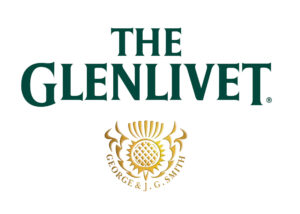
Daniel Prigge: Surviving the Hits
The Purple Heart Foundation connects with Purple Heart recipients to share their unforgettable stories of valor. Here on the Purple Heart Foundation blog, you will read about the personal experiences of some of our heroes. These veterans have proudly served and sacrificed to protect our nation. Daniel Prigge is one of them…he is lucky to be alive, and proud to share his story to inspire others to keep carrying on.
“My name is Daniel Prigge, I served a little over 10 years in the US Army. I was wounded on May 03, 2011. My vehicle was struck by three EFP roadside bombs. My convoy was hit with a total of five EFP’s and one EFP that did not go off. My truck was also hit by an RPG and small arms fire during the ambush.
I was on a small fourteen-man team that was PSD (Protective Service Detail) for the general in charge of the pull out of Iraq. On May 2nd, the general took a helicopter flight to a meeting right outside of Baghdad, Iraq. The next day, my team was on the way to pick him up and bring him back to our FOB (Forward Operating Base). We were on the outskirts of Baghdad on a route that had a fence line on the left side and a canal on the right side. We were using RG33L trucks – a mine-resistant light armored vehicle built longer than the RG-33 to hold twice as many people – due to how many people we would have to escort from place to place. We were traveling down the route when suddenly I see an RPG hit the front of my truck…seconds later I felt an explosion to the left side of my vehicle.
I was the truck commander of the convoy, I was knocked out from the explosion and had sustained injuries of a shifted spine, both knees completely blown out and dislocated, left hemiparesis, broken nose, intestinal problems, brain leakage as well as shrapnel hitting my eye and destroying my optic nerve.
After the explosion, our convoy was still under fire. I looked at the vehicle behind me and saw that the truck was burning on fire with my guys inside. Our coms were not working due to the explosion, I came-to, dismounted the truck and directed four guys including myself to bound in teams of two back to the burning vehicle. The burning vehicle was about three hundred meters behind us. The first and second truck in the convoy were not able to turn around and get us out of the kill zone due to the fence and the canal on the route. My team bounded three hundred meters and helped get the other guys on the team out of the burning vehicle. We were still under contact, but by this time we received help from the Iraqi Special Operations unit. We finally secured the kill zone about fifteen minutes into the fire fight.
I took off my helmet and that is when the back of my head swelled up. I wasn’t aware that the entire time, my helmet was acting as a make-shift compression bandage. So, once I took the helmet off, my head expanded, and I passed out on the ground next to an Iraqi Army truck. Due to the unexploded ordinance still hot in the kill zone it took the MEDEVAC helicopter three hours to land to take the wounded to the nearest FOB. I went through over fifty surgeries including back surgery, six knee surgeries to put cadavers and to put my tibia and fibula back together. My fibula is cut in half due to it completely dislocating.
I retired from the Army in 2015 and now own a Max Muscle Sports Nutrition store in Green Bay, Wisconsin. My awards include Iraqi Campaign Medal with two campaign stars, Army commendation Medal (4th award), Purple Heart (2nd award), Army Achievement Medal, Army Good Conduct Medal (3rd Award), National Defense Medal, Global War on Terrorism Medal, Army Service Ribbon, Combat Infantry Badge, Expert Infantry Badge, Ranger Tab, Parachutist Badge, CLS, Combatives level 3 and Tiger Swan qualified.“
Daniel Prigge, US Army, Retired, Purple Heart Recipient
To help the Purple Heart Foundation continually provide programs, services, scholarships and other opportunities to veterans like Daniel Prigge, make a donation today.
Help last “Navajo Code Talkers” This Memorial Day!
After the recent passing of 97 year old Navajo Code Talker, Fleming Begaye Sr., the Navajo Nation will be doing something special to honor the service and sacrifice of their veteran community.
This Memorial Day the Navajo Nation in Rock Point, Arizona will be hosting a Memorial Day Celebration to honor more than 74 veterans, multiple Purple Heart recipients, 2 Gold Star Moms and the last 2 remaining Navajo Code Talkers from World War II, Peter MacDonald and Thomas Begay!
This Navajo community is a small and humble group of Native Americans that live on reservation, so they have partnered with the Purple Heart Desert Thrift Shop in Mesa, Arizona to collect donations until May 24th. 100% of ALL cash donations in store or donations online will benefit the Navajo veterans and their Memorial Day Celebration!
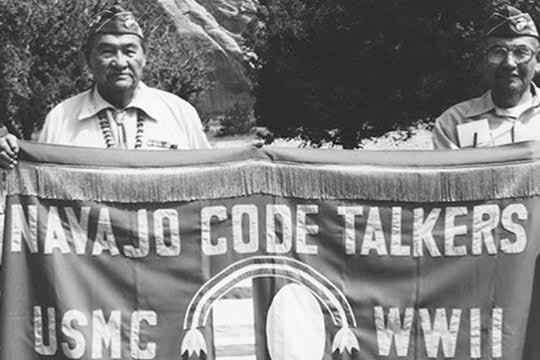
The Navajo Code Talkers have a unique history and are an infamous group of veterans that were recruited by the United States Marine Corps to use their native Navajo language to help maintain communication secrecy during the World War II. After the Navajo Code was developed, the Marine Corps established a Code Talking School where over 400 Navajos (Dine) were recruited as Code Talkers throughout World War II. The Japanese were never able to break these codes, that is why the Navajo Code Talkers are legendary – after WWII they were credited with helping the United States secure the Allied victory in the Pacific.
Navajo Nation President Jonathan Nez and Vice President Myron Lizer offered their heartfelt condolences to the family and loved ones of Navajo Code Talker Fleming Begaye, Sr., who passed away on Friday at the age of 97 in Chinle, Arizona.
“The Navajo Nation has lost another brave and selfless Diné warrior, who sacrificed more than we’ll ever know to defend our country,” said President Nez. “We offer our heartfelt appreciation to the family for sharing his life with us. May the Creator bless you and your family with strength and comfort.”
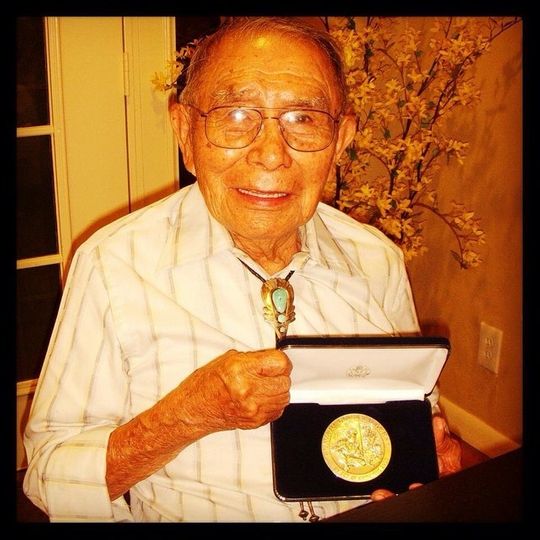
Navajo Code Talker Begaye is Tódích’íi’nii (Bitter Water Clan) and born for Kinłichii’nii (Red House People Clan). He was born on Aug. 26, 1921 in the community of Red Valley, Arizona and resided in Chinle, Arizona at the time of his passing. Begaye served as a Navajo Code Talker in the Marine Corps from 1943 to 1945 and fought in the Battle of Tarawa and the Battle of Tinian. He later spent one year in a naval hospital as a result of injuries and wounds he received during his service.
Following his military service, Begaye returned to the Navajo Nation where he owned and operated “Begaye’s Corner” trading post in the community of Chinle, where he also lived with his wife and three children.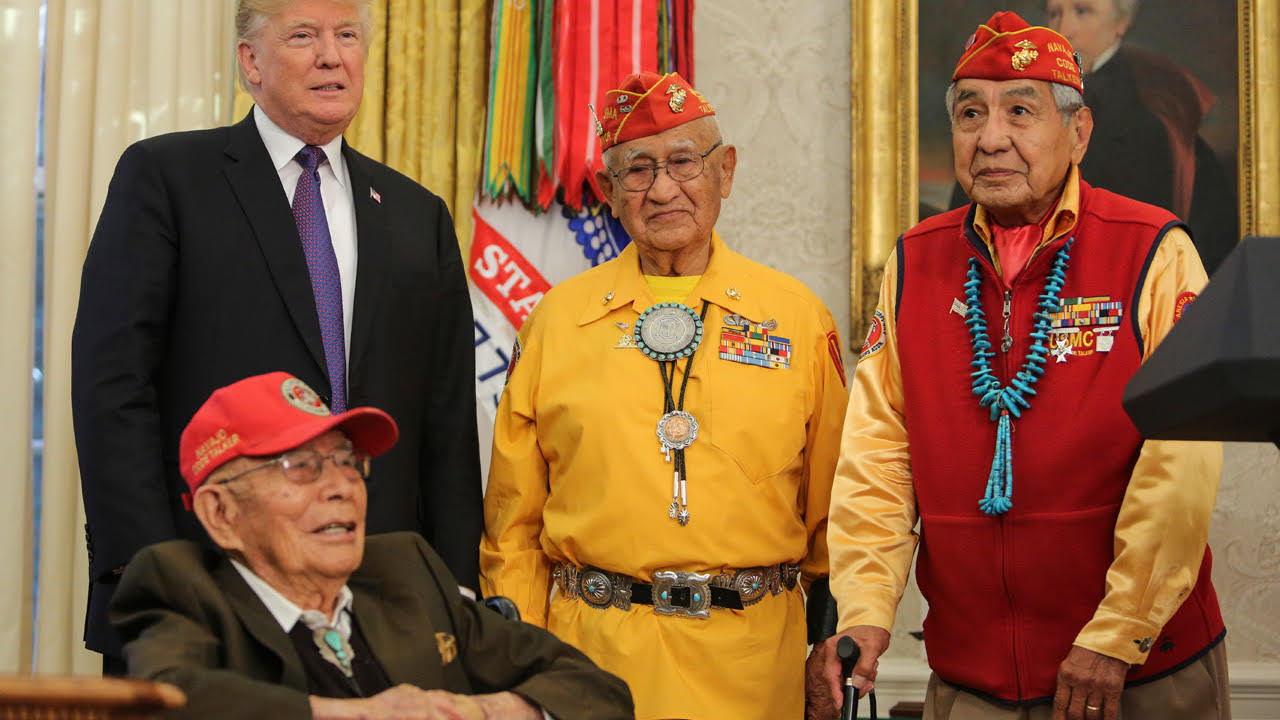
“Code Talker Begaye was a warrior, a family man, and a businessman. In every aspect of his life, he was a loving person who cared greatly for his people. Today, I ask our Diné people to keep his spirit and his family in your prayers as we give thanks for his life and his legacy,” said Vice President Lizer.
Funeral services and arrangements for Navajo Code Talker Fleming Begaye, Sr. are pending.
You can help the Navajo Nation honor Mr. Begaye’s heroic comrades, the last remaining Navajo Code Talkers, Peter MacDonald and Thomas Begay, as well as recognize dozens of other distinguished Navajo veterans and their families living on the Navajo reservation in Arizona….
Make a donation to the Navajo Nation Memorial Day Celebration at Purple Heart Desert Thrift!
100% of your donation will benefit the Navajo veterans and your donation is 100% tax-deductible! Help us honor their service and sacrifice!
Mesothelioma Awareness Day: How This Disease Continues to Impact Veterans
Every 26th of September, Mesothelioma Awareness Day (MAD) is recognized as a day to spread information about this rare disease and educate people about the dangers of its only known cause, asbestos exposure. Of the nearly 3,000 Americans diagnosed with mesothelioma each year, 30 percent of this total are veterans. It is important that we acknowledge the veteran population affected by this disease and continue efforts towards finding a cure.
What is Mesothelioma?
Mesothelioma is a form of cancer that primarily affects the lining of the lungs, but can also be present in the lining of the abdomen and heart. Due to its prolonged latency period, symptoms of this disease typically do not arise for nearly 10 to 50 years. When symptoms do begin to appear, oftentimes, the disease has already progressed to an advanced stage, making treatment options extremely limited.
Historically, the cause of mesothelioma cancer has been linked to asbestos exposure. Asbestos is a naturally occurring mineral that was often used in materials prone to heat and friction. When asbestos is disturbed, airborne fibers have the ability to be inhaled or ingested, gaining access to our internal organs. These fibers lay dormant within our bodies where they cause inflammation and scarring, leading to the development of tumors.
For those diagnosed with mesothelioma, the prognosis is most often very poor. Patients who are diagnosed at an earlier stage are given between 16 to 21 months to live post-diagnosis, which is a limited amount of time to pursue treatment.
How Are Veterans Affected?
Service men and women of our military are susceptible to asbestos exposure as a result of mass historic use of asbestos-products. While there has been a decline in asbestos usage and stricter regulations, asbestos may still be present on military bases, naval ships, and aircraft equipment. Because of this, there is a steady diagnosis rate amongst veterans. This will remain unchanged until asbestos is completely banned in the United States or the government issues a mandate for all asbestos to be removed from military locations.
Those who have served our country between 1920 to 1980 are at the highest risk of developing an asbestos-related disease, as this was the height of asbestos usage. Locations such as the sleeping barracks of ships used in the Navy were tight and limited, allowing for a high concentration of fibers to be present if asbestos was disturbed. Other branches that are affected by asbestos include the Air Force, Army, Coast Guard and Marines through asbestos materials used in things such as aircraft braking systems, military vehicles, and fireproofing for ships.
An additional risk factor that should be kept in mind is the use of asbestos in other countries. Members of our military can also be exposed while on deployment and stationed in areas that are war-torn, and as a result, have created large amounts of debris and rubble.
Across borders, many older buildings and homes on United States bases could be harboring asbestos-containing materials, such as roofing and flooring tiles. While it is difficult to avoid exposure because asbestos fibers are invisible to the naked eye, with the right protective equipment and knowledge, we can work to keep our military safe from these asbestos-related diseases.
Symptoms & Detection
Veterans that believe they may have been exposed to asbestos should receive checkups frequently and monitor their health closely. Symptoms of mesothelioma often mimic those of other less serious illnesses and should be evaluated no matter how seemingly minor. Some of the symptoms are as follows:
- Abdominal swelling
- Breathing difficulties
- Muscle Weakness
- Chest pain
- Coughing
Testing such as X-rays and CT scans can provide insight into underlying symptoms and help identify any abnormalities. Blood tests should also be performed regularly to see if there is an overabundance of mesothelin present in the blood, which may hint at malignancy. It is vital to monitor symptoms immediately. This will allow for the best chance of survival and successful treatment if the disease is caught early.
What to do if You’re Diagnosed
If you are diagnosed with mesothelioma, the next step is to understand your treatment options. It is important to research and connect with an oncologist that specializes in mesothelioma cancer, as they will be able to provide you with the latest and most effective treatments specific to your diagnosis. Cancer treatment costs can oftentimes be burdensome to families, and when diagnosed with mesothelioma, there is typically a party that is liable for the disease that you have developed. To manage these costs better, it is your right to seek legal action, as there are victim compensation funds set in place to ensure those who are affected by asbestos exposure receive the funding they deserve for their treatment.
How You Can Help
Mesothelioma is one of the lesser-known forms of cancer, receiving minimal coverage in mainstream oncology. With the support of others and by spreading awareness, this cancer will not only be diagnosed less, but a cure could be on the horizon. Through donating to the Purple Heart Foundation, the MOPH National Service Officer program will continue to help veterans fight for their VA benefits and receive much-needed care for injuries and illnesses, such as mesothelioma, that stem from service to our country.
Honoring Purple Heart Month
As we begin the month of August, it is our great pleasure to welcome you to
Purple Heart Month!
This month is dedicated to paying our respects to all the brave men and women wounded or killed in combat. The official Purple Heart Day is observed on the 7th day of August each year, commemorating the historic day in 1782 that General George Washington, Commander-In-Chief of the Continental Army, commissioned the first Purple Heart Medal, originally called the Badge of Military Merit.
The Badge of Military Merit is a purple, heart-shaped piece of silk bound with a thin edge of silver with the word merit embroidered in silver across the face. Only 3 Badges of Military Merit were awarded. The Badge of Military Merit was redesigned and re-commissioned in 1932 by General Douglas McArthur in honor of George Washington’s bicentennial birthday. Now known as the Purple Heart Medal – it is the oldest military award, first being awarded to soldiers in World War I and still given to soldiers today.
A presidential order signed in 1942 permitted the Purple Heart Medal to be awarded to all branches of the military including the U.S. Coast Guard. It was World War II, when the qualification to receive the Purple Heart Medal changed to honor those who were wounded or killed in combat – that is why it’s recipients often call it “the medal that nobody wants”. It is unknown how many soldiers actually received it. However, we know that the soldiers listed below are some of the most awarded Purple Heart Recipients in history:
Robert T. Frederick, U.S. Army: World War II (8)
David H. Hackworth, U.S. Army: Korean War (3), Vietnam War (5)
Joe Hooper, U.S. Army, Medal of Honor: Vietnam War (8)
Robert L. Howard, U.S. Army, Medal of Honor: Vietnam War (8)
William Waugh, U.S. Army: Vietnam War (8)
It took the Purple Heart medal many years to evolve into what it is today. Today, on the reverse of the medal, “FOR MILITARY MERIT” is inscribed. The medal itself is made of brass with a gold color to it, and also contains a bust of George Washington and his coat of arms. The purple color represents the blood of all those who have made sacrifices in war, but traditionally it represent the courage of those who serve. The original color of the medal George Washington created was purple, so it was only fitting that it would be used to honor his memory in the new medal.
The Military Order of the Purple Heart (MOPH) was formed in 1932. It is composed exclusively of men and women who have received the Purple Heart Medal and is the only Veteran’s Service Organization whose membership is comprised solely of “combat-wounded veterans”.
The Military Order of the Purple Heart Service Foundation, also known as the Purple Heart Foundation, was later created in 1957 as a non-profit organization. For more than 60 years, the Purple Heart Foundation has solely dedicated itself to funding programs and services that support our nation’s heroes. Donate to show your support of the Purple Heart Foundation and to help us continue to serve our nation’s veterans who have already sacrificed so much.
DONATE
